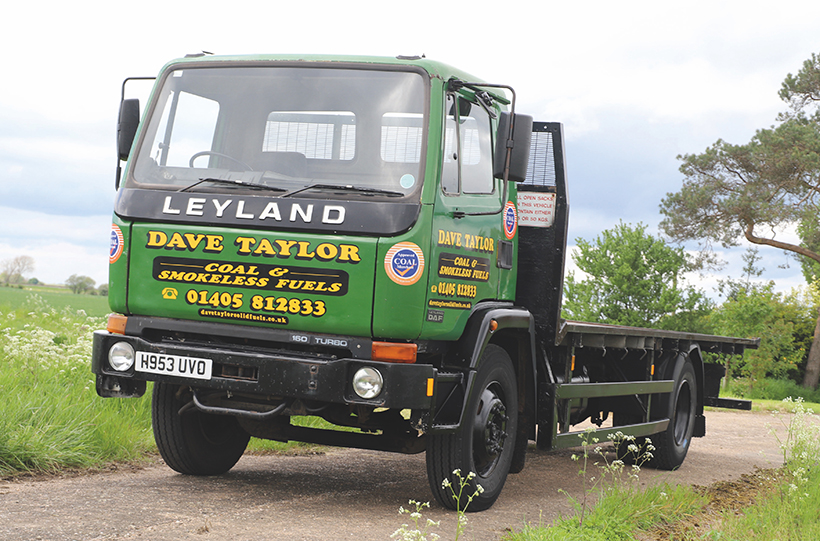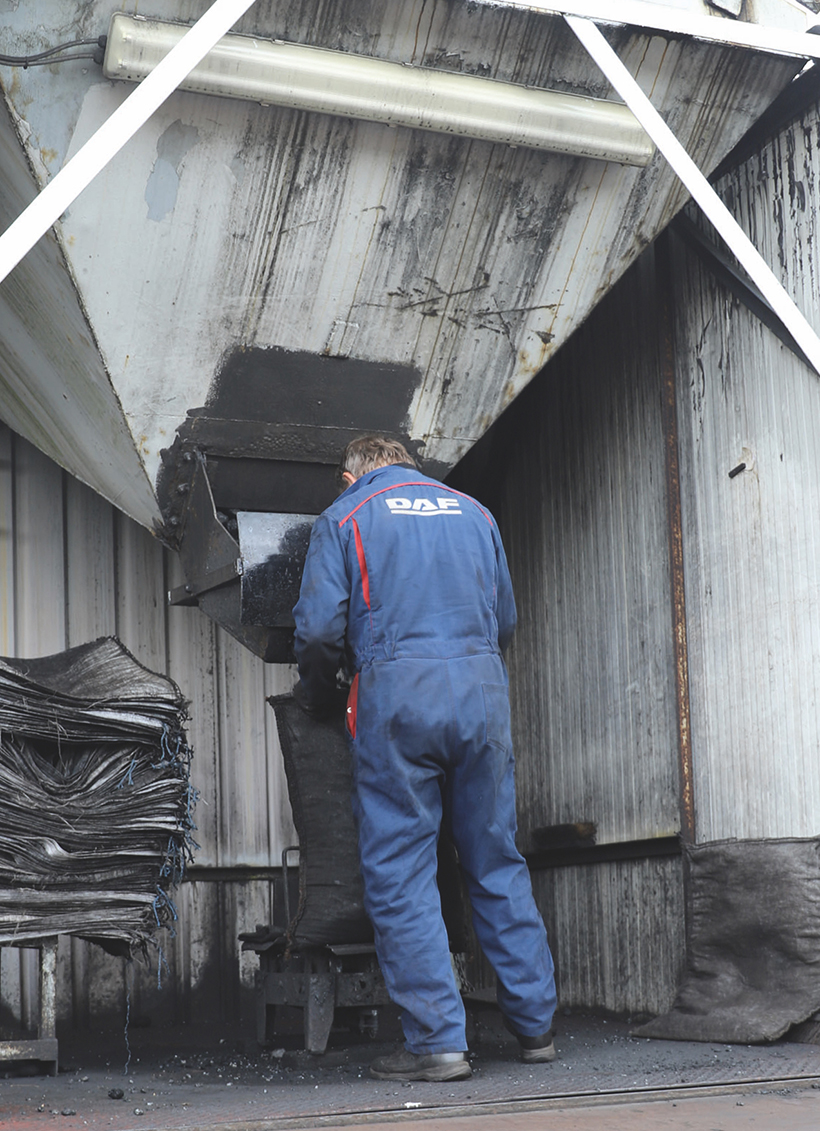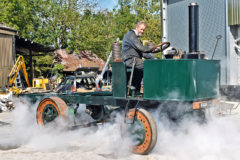Working Leyland trucks
Posted by Chris Graham on 6th September 2021
Working Leyland trucks are extremely thin on the ground nowadays, but Pip Dunn has tracked down an interesting pair in South Yorkshire.

Working Leyland trucks
The world was a different place when the Leyland marque quietly faded out of business, morphing into DAFs and slowly, but eventually, being dropped. A great name was gone, Well, that’s not strictly true because Leyland Trucks still exists…. It just builds DAFs. But at least it does build them in, er, Leyland. But working Leyland trucks – and I mean ‘proper’ Leylands with little or no Dutch DNA in them, are few and far between. And I’m not really including horseboxes or showmen’s trucks. Nope, it’s a sad fact of the progression of life, but proper working Leylands are very, very thin on the ground.
But one man who does still rely on them is Dave Taylor who runs two lovely 13-tonne Freighters on coal haulage out of his small but immaculate yard in Thorne, near Doncaster.
And when I saw a picture of one of them on the net, I had to find out more. Luckily the truck had a phone number and a quick call and Dave was more than happy for me to come and see the lorry…. Or, more accurately, lorries, because Dave actually has two of them.

An amazingly clean cab for its age, and the type of work it does!
A pair of beauties
H953UVO is the oldest of the pair, and this a bona fide Leyland Freighter 13.16, albeit the cab door badges say Leyland DAF. J913OGS is a newer model and badged as a Leyland DAF 60.180 on the front. Having taken over Leyland in 1987, in the late 1980s, DAF continued to keep the Leyland models in production.
Not long after the takeover, to match the newly-introduced 95 series, the Leyland models became the 45, 50, 60, 70 and 80 series depending on whether they were the old Roadrunner, Freighter, Cruiser, Constructor or Roadtrain models.
The Leyland models were cheaper than the DAF equivalents so were still popular both for those hauliers to whom price was a big deciding factor and to those who actually wanted a truly British lorry.
Manual loading
Dave sells seven different varieties of solid fuel, and it takes two of them about an hour to load a truck. Each bag of coal weighs 50kg and each has to be weighed ‘on the money’. It is still a very manual and labour-intensive job. Using a shovel loader, Dave takes the coal from the different pens and loads the chute with the type of coal he needs, then bags it – as is necessary, weighing it meticulously. Then the bag is carried, manually, on to the lorry.

The coal bags are filled via chutes, and these days no fewer than five different varieties of fuel are offered.
Because of the different varieties, he needs to use more than one chute and load the right orders as per his customers’ requirements. Once the truck is fully loaded, he straps the load down and is then able to start the round. And this procedure has to be repeated every day for both lorries!
“I have set rounds for each lorry for each fortnight. I don’t charge for deliveries, although if you buy in bulk, the cost per bag does drop marginally.”
This is heavy work, and Dave does between 40 and 50 drops a day with the truck doing typically 150-200kms a day. “We start loading at 0700, as I can’t leave the yard until 0800 because we are a residential area. We are fully tachograph and CPC compliant.”
Simplicity is key
Dave is now 70, but you’d never know. All those years of humping 50kg bags of coal has kept him as fit a butcher’s dog, so to speak. “I had worked as a coal man for 40 years, and in 2006 I bought out Baxter’s Fuels of Askern, so I now own it outright.”

Once filled, each bag of solid fuel has to be weighed individually and then hand-ball loaded on to the lorry.
Part of that purchase included the two Leylands. “They were secondhand to Baxter’s, but I’m not sure who had them before,” says Dave. Both lorries are plated at 13 tonnes, which is fine for the work Dave does. “The older lorry is the better ride,” he laughs.
Running old lorries is, though, becoming ever-more challenging. While they are not falling foul of any emission legislations for the work Dave does and the areas he serves, he does say parts are getting harder to source. On the other hand, they have proved to be ultra-reliable, and simple to run. “For the past four or five years both have sailed through their MoTs. The worse issue was one advisory. Last year neither had any issues, not even any advisories.
“They are pretty good on fuel as well, and they cost about £50 a day to run. And of course they have no need to have any AdBlue!”
And simplicity is one thing Dave likes about the trucks. “They don’t have any computers or any diagnostics! They are easy to run.” He laughs. And despite their age, Dave is happy to report “I’ve never had a VOSA issue at all!”

An analogue tachograph is something of a rarity on a working lorry these days!
George Donnelly, who works with Dave in undertaking the loading, does all the maintenance on them including their six weekly examination and MoT preparation. The Leylands are out Mondays to Fridays and Saturday is the day for maintain them, cleaning them and looking after the yard.
Dave aims to keep the Leylands running as long as he can, and so long as they remain reliable, he can keep them running and no legislation forces him to change, then he’s happy, and he’s also a bit of a fan of the attention they attract.
Even though there are legislation changes into what types of fuel people can burn in their houses, this is not an issue to the business, which is adapting by selling the types of smokeless fuels now needed for people’s fireplaces. And even though central heating is obviously so popular, Dave still has a large client base of people who like a real fire for whatever reason – something I wholly understand.
On the road
Dave’s compact yard is not the best place for images, and, let’s face it, I don’t need much of an excuse to have a ride in a classic! So we head off for a quick spin to take some pictures.

Despite its age, H953UVO remains in remarkably good condition inside as well as out. It has a lovely smell of coal in the cab, which is anything but shabby inside.
Under the day cab is a Cummins 5.88-litre six-cylinder turbo engine which gives a credible 162bhp which is more than enough for Dave’s work. The gearbox is a ZF five speed which is easy to use.
With no load on, the little Leyland flies along – it has no speed limiter, but we don’t go too quickly, and instead find a spot for pictures – and even the sun decides to appear!
Pictures done, it’s time to head back to the yard and Dave offers to load a few bags of coal for more shots – plus it’ll give him a head start on Monday morning.
For a money-saving subscription to Classic & Vintage Commercials magazine, simply click here





